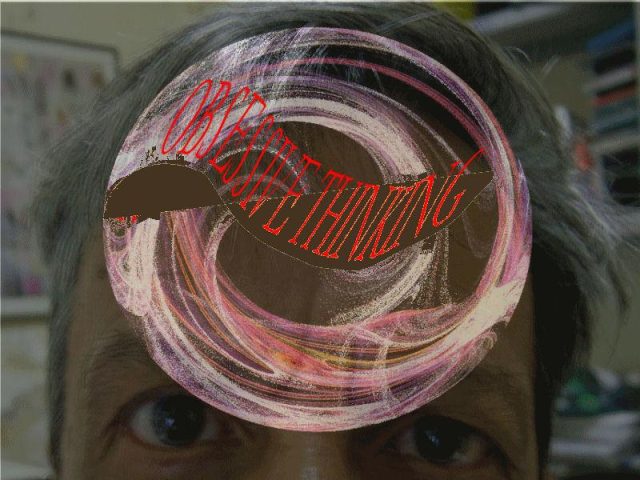In the whirlwind of today’s fast-paced world, high-pressure situations have become an almost inevitable part of our daily lives. Whether it’s an impending deadline at work, a crucial exam, or a significant life decision, these moments can often trigger a cascade of obsessive thoughts that spiral out of control. It’s a feeling many of us know all too well—the racing mind, the endless loop of worries, and the overwhelming sense of being trapped in our own heads. While these experiences are common, it’s important to remember that you’re not alone and there are effective strategies to help you regain control. In this article, we’ll explore compassionate and practical tips to help you break free from the cycle of obsessive thinking, empowering you to navigate high-pressure situations with clarity and calm. By understanding and applying these techniques, you can transform moments of stress into opportunities for growth and resilience.
Understanding the Triggers of Obsessive Thinking
In high-pressure situations, the mind can easily become a whirlwind of relentless thoughts. Understanding what triggers this obsessive thinking is crucial in managing it effectively. These triggers can often be categorized into emotional, cognitive, and situational factors.
- Emotional Triggers: Feelings of anxiety, fear, or inadequacy can fuel obsessive thinking. These emotions often amplify our concerns, making them appear larger than life.
- Cognitive Triggers: Perfectionism and a need for control can lead to an endless loop of thoughts. This is when the brain continuously seeks solutions to perceived problems, even when no immediate action is possible.
- Situational Triggers: High-stakes environments, such as a critical work presentation or a personal crisis, can magnify stress and provoke an obsessive thought cycle.
By identifying these triggers, you can begin to disrupt the pattern of obsessive thinking. For example, practicing mindfulness can help you acknowledge and release emotional triggers, while setting realistic expectations can ease cognitive pressures. Consider the table below for a quick reference on potential triggers and their calming strategies:
| Trigger Type | Example | Calming Strategy |
|---|---|---|
| Emotional | Fear of failure | Deep breathing exercises |
| Cognitive | Perfectionism | Set achievable goals |
| Situational | High-stakes meeting | Prepare thoroughly |

Mindfulness Techniques to Regain Focus and Calm
In the midst of high-pressure situations, it’s easy for our minds to spiral into cycles of obsessive thinking. To regain focus and calm, practicing mindfulness can be a powerful antidote. Here are some effective techniques:
- Deep Breathing: Inhale slowly through your nose, allowing your chest and lower belly to rise. Hold for a moment, then exhale fully through your mouth. Repeat this process to center your mind and body.
- Body Scan: Sit or lie down comfortably. Close your eyes and focus on each part of your body, from your toes to the top of your head, releasing any tension you may find.
- Grounding Techniques: Engage your senses to anchor yourself in the present. Notice five things you can see, four you can touch, three you can hear, two you can smell, and one you can taste.
When you’re caught in the whirlwind of obsessive thoughts, consider using the following quick-reference table to remind yourself of these calming practices:
| Technique | Description |
|---|---|
| Deep Breathing | Focus on slow, deliberate breaths to center yourself. |
| Body Scan | Relax each part of your body to release tension. |
| Grounding | Use your senses to anchor yourself in the present moment. |
By incorporating these mindfulness techniques into your routine, you can create a mental toolkit to navigate high-pressure scenarios with greater clarity and composure.

Cognitive Strategies to Reframe Negative Thoughts
In high-pressure situations, it’s easy to fall into a loop of negative thinking. However, by employing cognitive strategies, you can effectively reframe these thoughts and regain control. One powerful technique is cognitive restructuring, which involves identifying distorted thinking patterns and challenging them with evidence-based reasoning. For example, if you find yourself thinking, “I’ll never succeed at this,” consider past instances where you overcame similar challenges and achieved success.
- Label Your Thoughts: Recognize and name the type of negative thought you’re experiencing, whether it’s catastrophizing, overgeneralizing, or all-or-nothing thinking.
- Question Assumptions: Ask yourself questions like “Is this thought based on facts?” or “What evidence do I have to support this belief?”
- Practice Gratitude: Shift focus by listing things you’re grateful for, which can help alter your mental landscape from negative to positive.
| Negative Thought | Reframed Thought |
|---|---|
| I’m not good enough for this task. | I’ve succeeded before, and I can learn and improve. |
| Everything is going wrong. | Some things are challenging, but not everything is bad. |

Practical Exercises to Build Resilience in Stressful Moments
When you’re caught in a cycle of obsessive thinking during high-pressure situations, it’s crucial to have practical exercises at your disposal. These exercises can help anchor your mind, allowing you to build resilience and find calm amidst chaos.
- Mindful Breathing: Focus on your breath. Inhale deeply through your nose, hold for a moment, and exhale slowly through your mouth. Repeat this process for a few minutes, concentrating solely on the rhythm of your breath.
- Grounding Techniques: Engage your senses to bring yourself back to the present. Identify five things you can see, four you can touch, three you can hear, two you can smell, and one you can taste. This technique helps to shift your focus from racing thoughts to the immediate environment.
- Progressive Muscle Relaxation: Tense and then slowly release each muscle group in your body, starting from your toes and working your way up to your head. This exercise can help release physical tension, which often accompanies obsessive thinking.
| Exercise | Benefit |
|---|---|
| Mindful Breathing | Reduces anxiety and enhances focus |
| Grounding Techniques | Promotes present-moment awareness |
| Progressive Muscle Relaxation | Alleviates physical tension |
Integrating these exercises into your daily routine can bolster your mental fortitude, making it easier to navigate through stressful moments without getting lost in obsessive thoughts. Remember, resilience is a skill that can be cultivated with practice and patience.








































